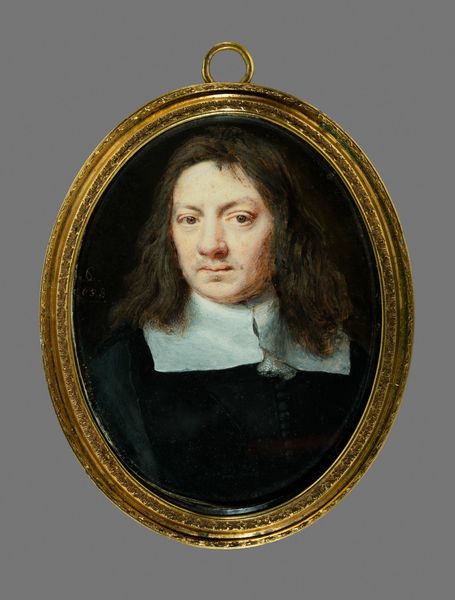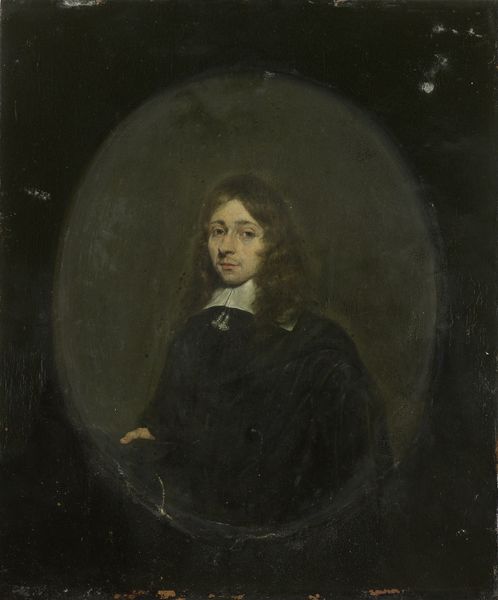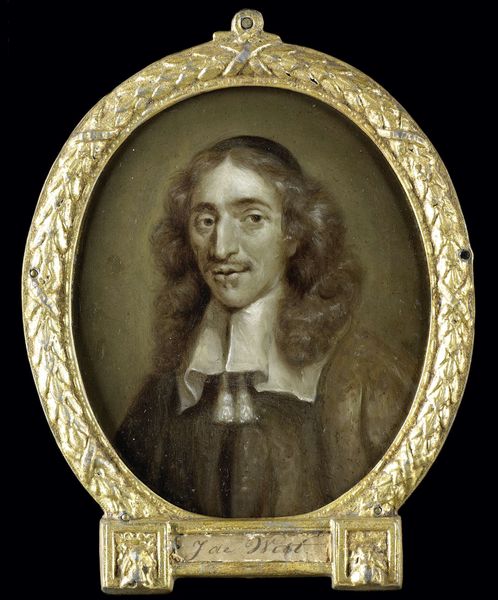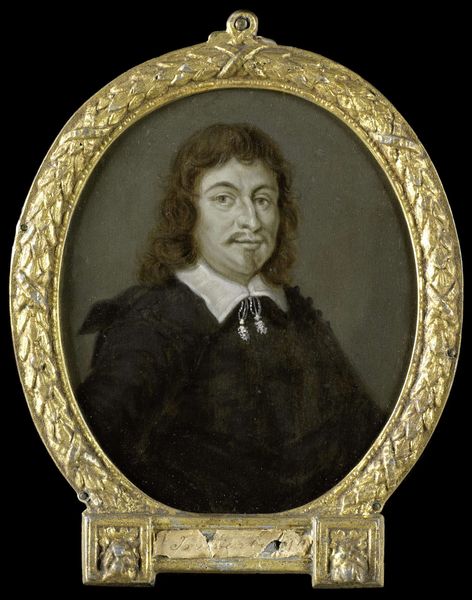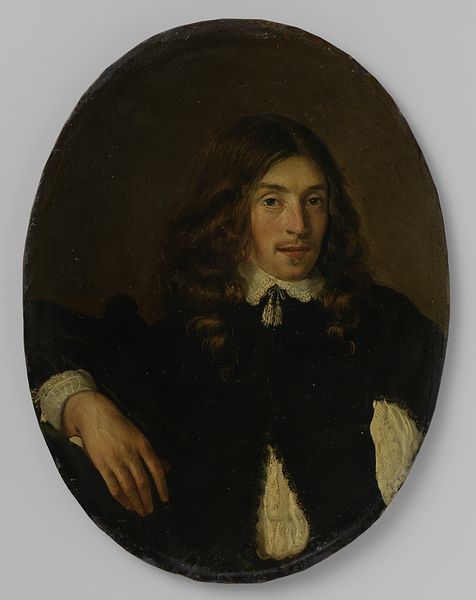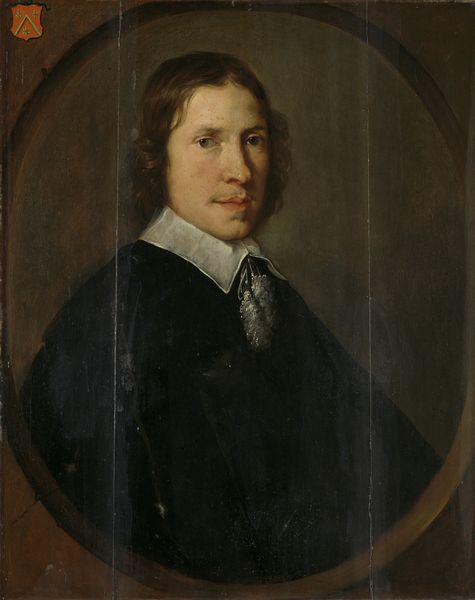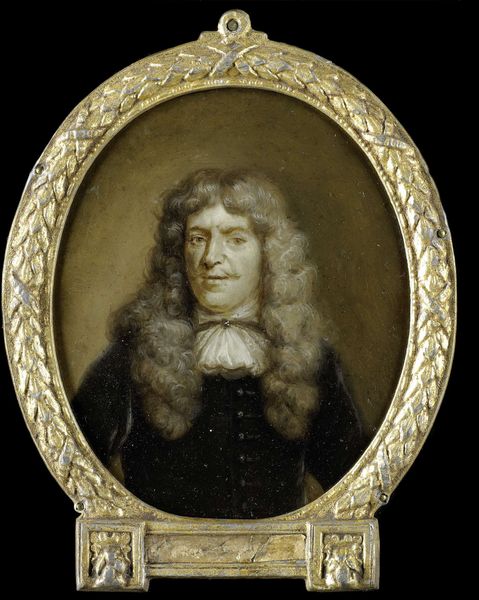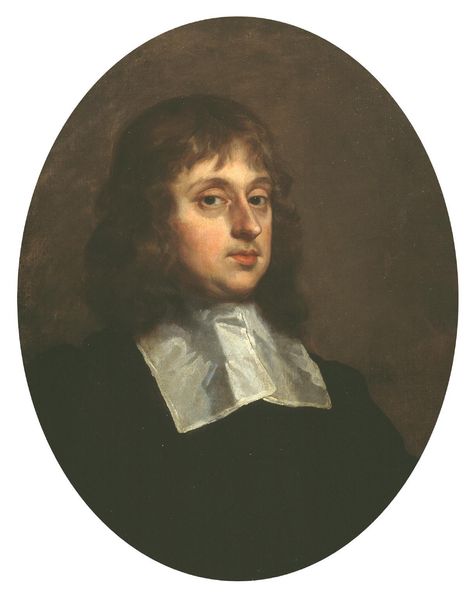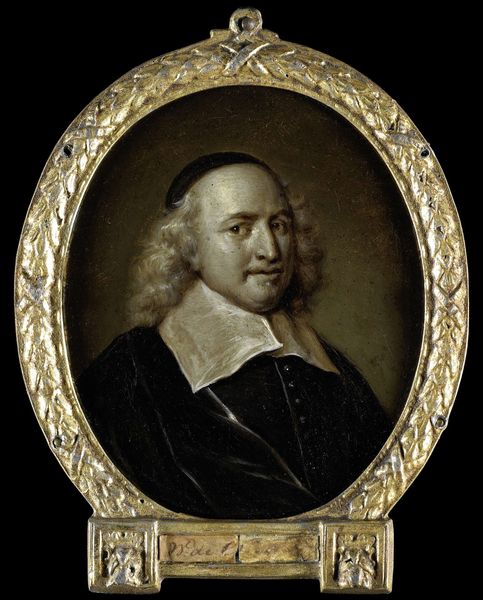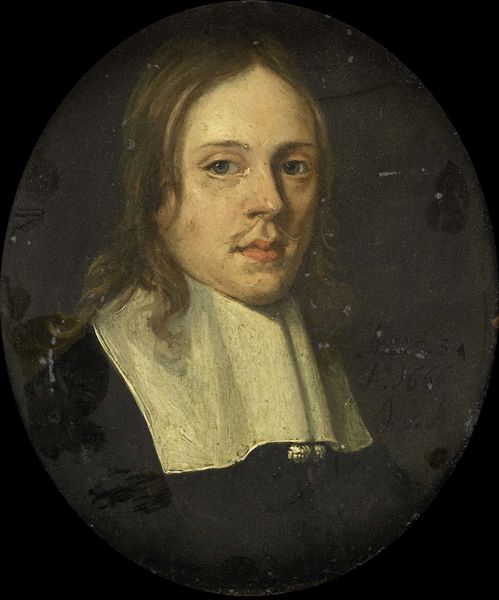![['Portrait of a Man', 'Portrait of a Young Man'] by Dirk Druyf](/_next/image?url=https%3A%2F%2Fd2w8kbdekdi1gv.cloudfront.net%2FeyJidWNrZXQiOiAiYXJ0ZXJhLWltYWdlcy1idWNrZXQiLCAia2V5IjogImFydHdvcmtzLzI5NjQ2MWZkLWNhMTQtNDgyYS1hOGI1LTg3MDNjNmRjODQ1Ni8yOTY0NjFmZC1jYTE0LTQ4MmEtYThiNS04NzAzYzZkYzg0NTZfZnVsbC5qcGciLCAiZWRpdHMiOiB7InJlc2l6ZSI6IHsid2lkdGgiOiAxOTIwLCAiaGVpZ2h0IjogMTkyMCwgImZpdCI6ICJpbnNpZGUifX19&w=3840&q=75)
painting, oil-paint
#
portrait
#
baroque
#
dutch-golden-age
#
painting
#
oil-paint
#
sculpture
#
figuration
#
portrait reference
#
genre-painting
Dimensions: support height 14 cm, support width 10.5 cm, outer size height 29.3 cm, outer size width 26 cm, outer size depth 2.9 cm
Copyright: Rijks Museum: Open Domain
Curator: Looking at this oil on panel piece, possibly a dual-titled work—referred to both as "Portrait of a Man" and "Portrait of a Young Man"—from 1659, immediately strikes one as a work of profound, understated dignity. What catches your eye? Editor: A somberness, almost resignation in his gaze. It’s arresting, how a simple portrait can carry so much emotional weight. You almost get the sense you can see past the physical. Curator: Indeed. The subject's hand, positioned centrally, gestures toward a restrained emotional depth. His costume speaks volumes. That wide, starched collar with delicate lace whispers of wealth, but doesn't shout. The darkness, in its heavy blacks and muted browns, adds a weighty feeling. Editor: And consider how this imagery participates in shaping social memory. Aristocratic power in that era was performative. This piece, painted at the height of the Dutch Golden Age, signals social standing as a cultural commodity. His soft, seemingly kind look creates some contrast, a slight unease between citizen and civic duty. Curator: Absolutely. Beyond surface portrayal, early portraiture possesses powerful symbolic functions. It commemorates individual identity—often embedding social and even psychological insight within strict formal conventions. What strikes me are his features. Though rendered meticulously, there’s an intentional smoothing or generalising, isn't there? It invites identification with perhaps an "everyman," a person that signifies broader virtues and status through symbols rather than individualized quirks. Editor: Interesting point! It challenges conventional notions. Was this figure representative? What were the historical and socio-economic implications of crafting this carefully calibrated image? The man becomes almost a type or ideal rather than purely individualized subject. The artwork’s reception hinges on these ambiguities. Curator: Right. This work's value as both social record and complex arrangement of symbols gives it its continuing pull. I'd say its ambiguities give it lasting power. Editor: I agree completely. It is as potent an insight into image-making, and that specific period's cultural politics, as anything you might read in historical accounts. It makes you reflect on how visual statements speak about what the culture found noteworthy in representation.
Comments
No comments
Be the first to comment and join the conversation on the ultimate creative platform.
